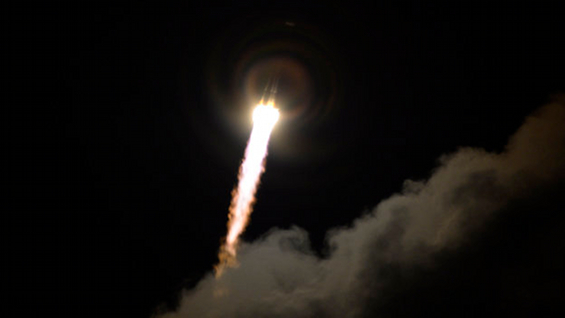It’s the right size, in the right place. Kepler-186f orbits its host star in the habitable zone – the region where liquid water could exist on the surface of the planet.
Image Credit: NASA Ames/SETI Institute/JPL-Caltech
It’s the right size, in the right place. Kepler-186f orbits its host star in the habitable zone – the region where liquid water could exist on the surface of the planet.
Image Credit: NASA Ames/SETI Institute/JPL-Caltech
The Auckland chapter of MathsJam will have its inaugural meeting on May 20th!
Visit www.mathsjam.com or email auckland@mathsjam.com to learn more!
This year’s Pickering Lecture was given by the present director of the Jet Propulsion Laboratory, Dr Charles Elachi.
The most memorable part of his excellent talk was the “7 minutes of terror” video about the descent of Curiosity onto the surface of Mars.
The 18th annual conference on microlensing was held in Santa Barbara in January. The main topic was of course planetary microlensing, with a great deal of discussion centred on getting results of new planetary systems out quickly.
Three-lens systems are also of particular interest for many people in the field, especially as the power of microlensing to detect multiple-planet systems has been demonstrated.
And there was a great day out at the California Science Centre:
![]()
ESA’s Gaia mission blasted off this morning on a Soyuz rocket from Europe’s Spaceport in Kourou, French Guiana, on its exciting mission to study a billion suns.

Planetary scientists have theorised that under a hard outer shell, Europa has a liquid ocean. Observations made with Hubble have captured a transient excess of ultraviolet light toward the limb of Europa. The explanation offered by the researchers is that a liquid geyser of water erupted from Europa’s surface, sending a plume of water high above the moon’s surface. Then molecules of water were subsequently split by high energy electrons caught in Jupiter’s intense magnetic field, producing the UV emission. See also Phil Plait’s Bad Astronomy article.
Here’s a photo I took of the aurora borealis when I was in Iceland. No prizes for astro-photographer of the year, but then again, all I did was put the camera on the ground and opened the lens for 30 seconds.
I have a number of research interests, but my main field of work is in the discovery of extra-solar planets using the technique of gravitational microlensing.
My other research interests include Galactic structure, machine learning, genetic algorithms and massive dataset mining.
If you’ve got any questions about my research topics, feel free to contact me.
 The Department of Physics is excited to announce that Dr Nicholas Rattenbury will be returning to Auckland in the second half of this year; he will hold a research position funded by the prestigious Rutherford Discovery Fellowship, which he won in 2012.
The Department of Physics is excited to announce that Dr Nicholas Rattenbury will be returning to Auckland in the second half of this year; he will hold a research position funded by the prestigious Rutherford Discovery Fellowship, which he won in 2012.
Nicholas is a leading member of the MOA collaboration, which searches for planets around distant stars.
My research initially focused on the study of massive stars. I have investigated the importance of mass loss and duplicity in stellar evolution (Eldridge & Tout, 2004; Eldridge & Vink, 2006; Eldridge, Izzard & Tout, 2008). I have actively collaborated with many astronomers to model progenitors of core-collapse supernovae and compare my models with observations (e.g. Eldridge et al. 2007, Pastorello et al., 2007; Mattila et al., 2008; Stancliffe & Eldridge, 2009,Fraser et al., in prep). I have also written a review on supernova progenitors (Eldridge, 2008) for the Royal Society. This work culminated in accurately identifying the progenitors of type IIP supernovae as red supergiants (Smartt et al., 2009).
An offshoot of my research played a key role in understanding the evolution of stars near the minimum mass for a core-collapse supernovae. I showed that these super-AGB stars are unlikely to be the supernova progenitors as previously suspected (Eldridge, Mattila & Smartt, 2007). Recently there have been more observed supernova progenitors near this minimum mass with luminosities less than those expected from stellar models. By varying the model physics I have shown that the luminosities are achievable but only by varying uncertain physics within the stellar models, such as increasing the carbon burning rate (Fraser et al., in prep). Continue Reading…